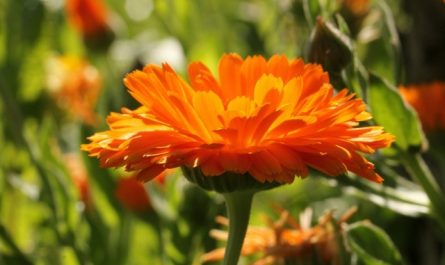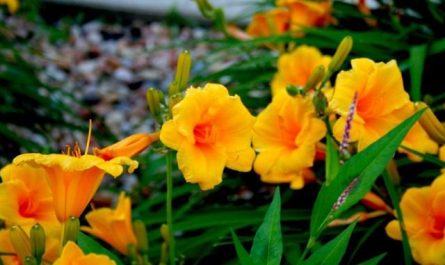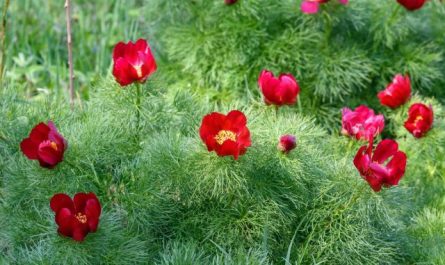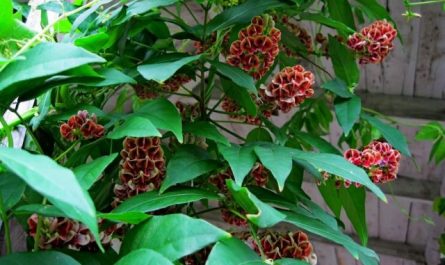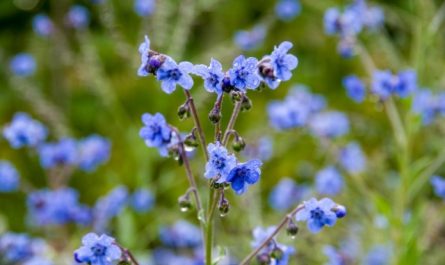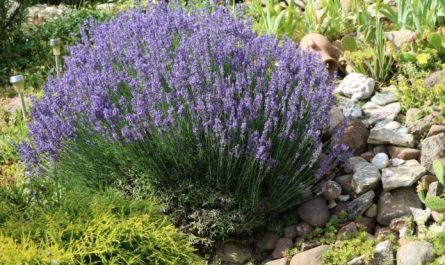The strength and speed of growth, impressive color and texture of the foliage of this plant have long been appreciated by gardeners around the world. Now many varieties of sweet potato morning glory can be purchased from us. The color of sweet potato morning glory includes reddish, purple, bronze and lime tones. Our article will help you understand the variety of available varieties of sweet potato morning glory and choose the most suitable ones for yourself.

Ipomoea batata is one of the most versatile ornamental plants, it grows well both in sun and in partial shade. It looks good both in container gardens and in various flower beds in the foreground as a ground cover.
First of all, this plant is loved for its colorful greenish-yellow, purple, bronze, copper or almost black foliage. And since its main decorative effect is in its bright leaves, you can admire the ornamental sweet potato throughout the season without worrying about flowering.
It is important to note that ornamental sweet potatoes (Ipomoea batatas) are the same species as edible ones, but when breeding attractive varieties, breeders did not pay attention to the yield and taste of the tubers. Initially, the selection of Ipomoea batatas began unplanned. In the last century, an American farmer growing vegetable sweet potatoes noticed an unusual plant with lime-colored leaves in his field. The farmer showed his find to a neighbor who was an amateur botanist. From that moment, ornamental sweet potato growing began. Although from the very beginning the idea of growing sweet potatoes for the sake of beauty was perceived skeptically, today it is difficult to imagine container gardening without this plant. Its fans among flower lovers are becoming more and more numerous.
To make sweet potato morning glory look its best, plant it along the edges of the container, where it can gracefully cascade down the pot. Although it is most often planted as a companion to flowering annuals (petunia, verbena, calibrachoa, snapdragon, pelargonium, and others), sweet potato morning glory can be placed in hanging baskets and on its own.
How to grow sweet potato morning glory?
As mentioned above, sweet potato morning glory grows well in almost any location, from full sun to partial shade. In hot summer climates, it may struggle in full sun during the hottest months, especially if the soil dries out a lot, so it is best to choose a location where the plants will be shaded from the scorching midday sun.
Compared to vegetable varieties, ornamental sweet potatoes have a more compact root system, so morning glory will adapt to growing in small containers. One plant should have at least 3-5 liters of soil.
Sweet potato morning glory grows best in rich, moisture-retentive, well-drained soil. It is suitable for light (sandy) and medium (loamy) soils. The suitable pH is slightly acidic and neutral soils. If you are growing sweet potato morning glory in containers, make sure the pots have drainage so that excess water can drain. If the soil remains too wet for a long time, sweet potatoes can become diseased and die.
Generally, you don’t need to worry about fertilizing sweet potato morning glory unless you want it to grow even faster. However, the plant benefits from fertilizing and responds well to pruning as needed. In good conditions, morning glory grows vigorously (especially the climbing varieties, which can get quite long). Don’t be afraid to prune the plant.
With excessive moisture, the foliage of the sweet potato morning glory often suffers from fungal diseases in the form of various spots. In open ground, the main pest of the sweet potato morning glory is slugs, which love to feast on juicy foliage. In closed ground, in the heat, the plant can be attacked by spider mites.

How to preserve sweet potato morning glory in winter?
Ipomoea yam is a very heat-loving plant that can overwinter in the ground only in zones 9a – 11b with frost-free winters. In the middle zone, the crop needs to be brought indoors for the winter. Unlike vegetable, ornamental sweet potato is very difficult to preserve as tubers, because it has very small tubers or may not form any at all.
If the bush has formed a tuber, it is not easy to preserve it, since neither a cellar nor a refrigerator are suitable for this (too cold), and at room temperature the tubers easily dry out. The only way to preserve the plant is in a pot on the windowsill. To do this, cuttings are cut from healthy bushes (around mid-August) and planted in pots.
Such young plants overwinter well as houseplants. If you place them on a sunny window, most popular varieties will not require additional lighting.
In winter, sweet potato morning glory will grow very slowly, without going into a dormant period. Rapid growth will begin with the arrival of sunny days, and then new cuttings can be cut from the plant. The main problem that arises during the wintering of sweet potato morning glory is spider mites. Indoors, this pest attacks sweet potatoes at the first opportunity. Therefore, you need to regularly turn over the leaves of sweet potatoes and examine them for mite attacks. If a pest is found, all plants on the windowsill should be immediately treated.
It is better to use preparations with a complex effect, which kill not only adults, but also eggs and nymphs. Unfortunately, during the wintering period it is often necessary to treat sweet potatoes several times.
Varieties of Sweet Potato Morning Glory
Globally, there are two types of ornamental sweet potato varieties – vines and bushes. Leaves can be lobed or simple (often heart-shaped). Colors vary, mainly purple: from pink to almost black and chartreuse: from lime to bright yellow. At present, the selection of sweet potato morning glory is developing by leaps and bounds, and not all interesting new products have reached our market. Nevertheless, you can already buy quite a few interesting varieties here. Read their descriptions below.
Ipomoea ‘Sweet Caroline Light Green’. It is famous for its lance-shaped, deeply lobed foliage of a bright lime color. The leaf blades become lighter with more sun and acquire a thin burgundy border. The leaves are up to 10 centimeters long. The vines can reach a length of 60 centimeters, grow quickly, and require a lot of space to grow.
Ipomoea ‘Sweet Caroline Purple’ Similar to the “Light Green” variety, but has plum-purple, very dark leaves. One of the few varieties of ornamental morning glory that readily blooms with funnel-shaped flowers in the summer.
Ipomoea ‘Sweet Carolyne Bronze’. The appearance is similar to the above-described variations, but its foliage is slightly less deeply lobed. The color of the leaves is “rusty”, young leaves are pale orange, and purple shades appear in older ones.



Representatives of the series “Sweet Caroline” — were pioneers in our country. They are the ones you can find most often on sale. The varieties are very unpretentious and fast-growing.
Ipomoea ‘Sweet Caroline Medusa Green’. New in this line. The variety has a bush-shaped crown and unique multi-fingered foliage, that is, unlike all other morning glories, its leaves have noticeably more lobes. The foliage is green with a purple blush on young leaves.
Ipomoea ‘Sweet Caroline Sweetheart Red’.



The “Svidhart” series differs from the above-described series of varieties by its more heart-shaped leaves. Depending on the color, they can be either more heart-shaped or more lobed. In particular, the “Red” variety has leaves that are mostly slightly lobed, but regularly heart-shaped ones are occasionally found on the bush. The color of the leaf is bright purple. But in variations “Sweet Caroline Sweetheart Light Green” and “Sweet Caroline Sweetheart Jet Black” Heart-shaped leaves without lobes predominate. These are long-vine plants (vines up to 1 meter), and the shoots are more delicate and thin.

Ipomoea ‘Margarita’. A bush with a strong creeping habit, often grown as a ground cover plant. It has pointed, lobed foliage, a bright greenish-yellow color. Unlike the Sweet Caroline series, Margarita is not so finely cut, the lobes are weakly expressed, and the leaf looks spear-shaped. Despite the fact that this variety is not so elegant, it has its advantages. In particular, it can easily overwinter on a window, even if it is not southern. That is, it is not demanding of lighting. This sweet potato is a record holder for growth speed. But most importantly, it is practically not affected by spider mites.
According to my observations, even if there are heavily affected bushes of other varieties next to it, there are no mites on it. And if these pests do take on “Margarita”, it will only be when they have no other food left.
Ipomoea ‘Ace of Spades’ (Ace of Spades). Reminds of the Sweetheart series, as it is characterized by heart-shaped leaves. However, among its leaf blades there are no spear-shaped ones, all of them have the shape of regular narrow hearts. They are also smaller in size than those of the Sweetheart series, and the vines are not as long, although the bushes also have an ampelous habit. The Ace of Spades variation has almost black leaves. There are varieties with other foliage colors.
Ipomoea ‘Desana Bronze’ (Desana Bronze) – a variety with bronze-purple foliage in the shape of a heart. The leaf blade is wide, the edges are sometimes wavy. The climbing variety grows to one meter in diameter. Unlike the varieties of the Sweetheart and Ace of Spades groups, their foliage is larger and has a not quite regular heart shape, but what is called a “heart with horns”, that is, on the widest part of the leaf blade, it often forms two noticeable protrusions.



Ipomoea ‘Illusion Emerald Lace’. Bush form, forms a large bush in the shape of a shock. Its lobed leaves are so finely cut that they form a kind of lace. This form has greenish-yellow foliage. Varieties with reddish foliage have also been bred – Illusion Garnet Lace and with dark purple leaves Illusion Midnight LaceAll representatives of the line are distinguished by lobed foliage with thin segments and a bush-like habit.



One of the best varieties for regions with hot summers. Climbing variety, can form vines up to 1,5 meters long. Represents something in between the varieties “Sweet Caroline” и “Illusion”Its foliage is lobed and deeply scattered, but it is not as finely cut as that of the morning glory. “Illusion”, but not as wide as “Sweet Caroline”. In the variety “Lime” Sweet potato leaves are bright lime green “Solar Power Black” – rich dark purple foliage. The liana is powerful and fast growing.



Ipomoea ‘Pink Frost’ or ‘Tricolor’. A spreading and multi-colored liana that has ivy-like foliage in white, green, pink and dark pink, which looks like chaotic patterns against a pale green leaf blade. The more sunlight the plant receives, the brighter the leaves become. Bushy and compact, creeping variety.









